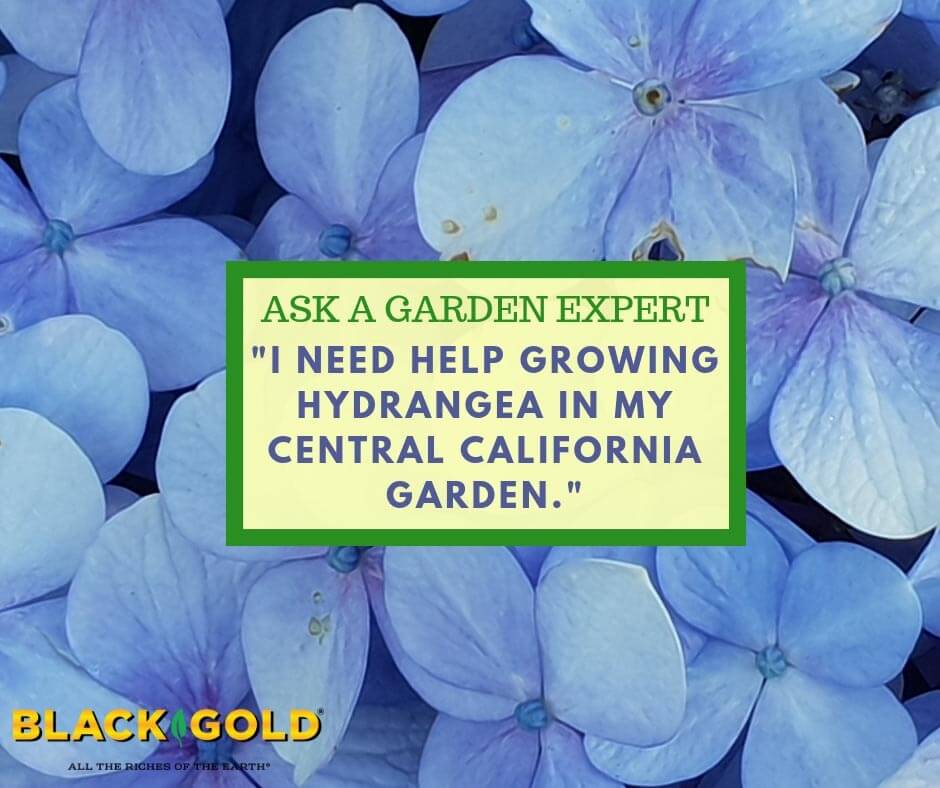
“Some tips please – I planted a Hydrangea, and it lasted just a couple of weeks. I love the plant and would like to try again. Help!” Question from Rita of Dinuba, California
Answer: Hydrangeas are lovely when they are blooming at their prime, but many can be finicky, especially when it comes to soil and moisture levels. I see that your city has a USDA Hardiness Zone of 9, and Sunset Climate Zone 8. Your hot, arid summers and cool, wet winters don’t favor the needs of standard mophead or lacecap hydrangeas (Hydrangea macrophylla). These survive in USDA Hardiness Zones 5-11, but they are really moisture-needy plants.
This doesn’t mean that you lack options. There are three possible solutions to consider.
1. Plant the tougher, more drought-tolerant panicle hydrangea (Hydrangea paniculata) in a protected spot in your yard and give it lots of care through summer. There are many beautiful varieties, such as the large, bushy ‘Limelight‘, which has greenish-ivory flowers, and the compact ‘Pinky Winky‘, which has ivory blooms that darken to deep pink as they age. I suggest planting panicle hydrangea in a partially shaded location on the north side of your home and amending the soil heavily with organic matter. Black Gold Canadian Sphagnum Peat Moss and Black Gold Garden Compost Blend will really boost levels of water-holding organic matter. Follow up with a 2- to 3-inch layer of fine bark or leaf mulch to reduce surface evaporation. Try to plant your hydrangea where it will be protected from the midday sun. Even though this hydrangea is tougher, it will still need to be irrigated regularly throughout summer.
2. Attempt to plant a mophead or lacecap hydrangea (Hydrangea macrophylla) as you would the panicle hydrangea but give it even more water and care.
3. Plant a variety of the California Lilac (Ceanothus spp.), which is native to your state and has bold clusters of violet-blue or white flowers that rival those of hydrangea. The variety ‘Concha has extra pretty violet-blue flowers, and the flowers of the compact ‘Mill’s Glory‘ are forget-me-not blue. California Lilac would be the easiest option because the plants are best adapted to your climate. (Click here to read more about growing California lilac.)
I hope that these tips help! Happy gardening.
Jessie Keith
Black Gold Horticulturist

